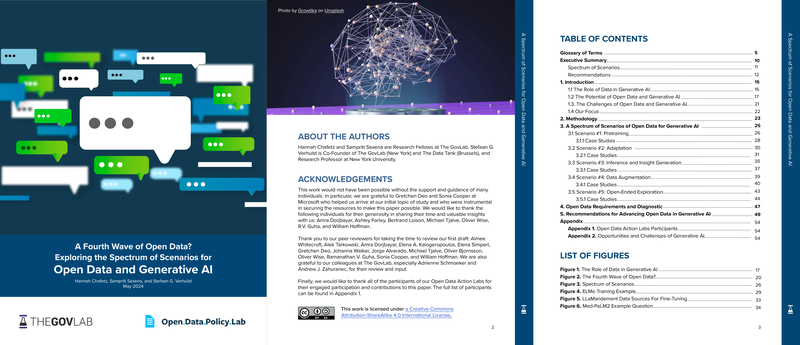Exploring the Intersections of Open Data and Generative AI
Introduction
Generative AI has rapidly become a key player in how we interact with and process information, reshaping various industries from healthcare to entertainment. In this context, open data — data that is accessible for anyone to use, reuse, and redistribute — has the potential to significantly enhance generative AI applications. However, the integration of open data with generative AI also presents unique challenges and opportunities.
The Potential of Open Data in Generative AI
Enhanced Model Training and Insights: Open data can provide diverse, high-quality datasets for training generative AI models, leading to improved accuracy and reliability in AI outputs. For example, using open environmental data can help AI more accurately predict weather patterns.
Democratization of AI: By using open data, generative AI applications become more accessible and can be utilized by a wider audience, not just AI researchers or large corporations. This democratization can lead to more innovative applications across different sectors.
Transparency and Trust: Incorporating open data into generative AI can also enhance transparency, as the data sources are known and can be verified, potentially increasing trust in AI-generated outputs.
Challenges at the Intersection
Despite the potential benefits, several challenges need addressing:
Data Quality and Relevance: Open data varies widely in quality and relevance, which can affect the performance of generative AI systems that rely on this data.
Privacy and Security Concerns: Using open data in generative AI needs careful handling to respect privacy, especially when sensitive information is involved.
Integration and Standardization Issues: There are technical challenges in integrating diverse open datasets, which often come in different formats and lack standardization.
Future Perspectives
As we advance, the focus will likely shift towards improving the mechanisms for integrating open data with generative AI. This includes developing better data cleaning tools, standardizing data formats, and creating robust privacy-preserving technologies. Additionally, there will be an increased emphasis on creating frameworks that can ensure the ethical use of open data in AI, enhancing user trust and model accountability.
Conclusion
The intersection of open data and generative AI holds substantial promise for enhancing AI's capabilities and accessibility. By addressing the associated challenges and focusing on ethical, standardized, and transparent use, we can maximize the benefits of open data in advancing generative AI technologies.
In summary, the growing synergy between open data and generative AI not only paves the way for more powerful and accountable AI systems but also democratizes AI, making it a tool for widespread innovation and application across various sectors.
